You may have heard the idea that we all have different foot types. It’s often mentioned during the summer, perhaps at the swimming pool as wet feet leave impressions on the pavement around the pool.
In fact, a wet foot is the perfect test for discovering arch height, but is the arch height determined by the construction of your foot or your foot type? And further, can the design of your foot effect how you move? And can the way you move lead to injury?
Purposes
Our goal in physical therapy is to help our patients feel better and function better. Ultimately, we help the patient return to a more active, healthy lifestyle. More connected to the purposes they desire. This may include aiding them in a return to a specific job or athletic endeavor. We do this by paying attention to symptoms, the causes of pathology, and the compensations that occur. This is an incredible challenge requiring knowledge on a variety of subjects including anatomy, physiology, and biomechanics. Many injuries are created and/or sustained by the way we stand, step, stoop, bend, squat, twist, jump, run, and walk. Our literature is full of studies and papers, which relate injury to movement. In the last thirty years, a whole new paradigm for the treatment of musculoskeletal injuries as a result of athletic participation (sports medicine) has been developed. Treatment of these types of injury is based on our ability to understand the mechanics of sports movement and the patho-mechanics of injury.
Systems
Medical schools, podiatry schools, and schools of physical therapy traditionally introduce the student to the study of human anatomy, physiology, and biomechanics in a very systematic fashion. System by system, we learn about each region of the body, but often we fail to learn how the different regions of the musculoskeletal system relate to each other during human movement. In physical therapy, we call this concept Regional Interdependence. It means that sometimes injuries are created or sustained by distant regions of the body. For example, we often see people with symptoms of low back pain that are created by loss of normal motion in the hip joints or thoracic spine. Many injuries are created or sustained by stress resulting from abnormal function. Biomechanics is a field of study, which uses the laws of engineering and physics to describe motions of the body, and the forces generated by it. Functional biomechanics is a field of study, which seeks to understand the relationship and interaction that various body parts have with each other, and how these relationships contribute to our ability or inability to function.
Injuries and disorders of the lower kinetic chain foot, knee, and hip require a basic knowledge of the functional biomechanics of this region. The human foot plays a multifaceted role. Our ability to absorb shock, to propel through space, and to stand with relative stability is dependent on the structure and function of the feet. The foot is the most distal segment of the lower extremity and plays a major role in directing the motion of all the segments above it. The feet are challenged with the task of redirecting forces from the ground up and from the head, arm and trunk downward.
The human foot has two components that mechanically interact with the ground: the rearfoot (heel) and the forefoot (the arch, ball of foot, and toes). Both of these regions move in relation to the ground based on their characteristic shapes. In addition, the movement of the heel effects the movement of the forefoot and vice versa. The two parts of the foot are mechanically linked. The motion of the heel affects the motion of the forefoot and arch and the structure of the forefoot region effects the heel motion.
We can go back to see how your arch is effected by your foot type by using a wet foot to test the effect of weight bearing on your arch. If you get out of a pool and look at the impression your foot has made below you on the cement you will see one of three arch imprints:
Normal (medium) arch: You see about half of your arch.
Low arch: This footprint shows most of the foot. It looks flat. When your foot touches the ground, the arch collapses too much, creating too much foot motion and potential for injuries.
High Arch: A high-arch foot occurs when you see your heel, the ball of your foot, and a small line on the outside of your foot.
Your arch height in weight-bearing is effected by many factors. Two key factors are the stiffness of the soft tissues (muscles and ligaments) of the foot, and the relationship between the heel, the lower leg, and the forefoot. In the early 1960′s, three podiatrists from California (Root, Orien, and Weed) began to describe a concept called foot types. The concept was that foot structure can drive foot function. Certain structural relationships make the foot and arch collapse significantly (over-pronation) while other relationships prevent the foot from collapsing creating a rigid foot (loss of pronation). Often times the arch height gives us clues as to what foot type one has.
What is pronation and supination?
It is an action that occurs when the joints in the foot move so that the arch of the foot moves downward during a weight bearing motion. Essentially, your feet act as shock absorbers so that you have smooth movement when you walk. The collapse of the arch helps the foot absorb shock. It is the foot’s shock absorbing mechanism. Supination is an action that raises the arch and stiffens the foot turning it into a rigid lever. The stiffening of the foot helps us push off the ground effectively, creating effective propulsion.
What are the different foot types?
With our evaluation process we look to identify your foot type. There are 5 basic foot types. Each design creates certain compensatory movements which effect the way your foot and body function. Sometimes the design of your foot leads to injury.
Treating Overpronation and Supination
It all starts with a physical therapist analyzing the walking and running tendencies of a patient as well as observing lower body posture. We call it a biomechanical analysis. It’s important for the physical therapist to be able to identify the foot type and relate it to the injury. The foot design creates movement compensation that can either create or sustain injury.
Effective treatment can occur with custom foot orthotics that alter and modify movement patterns to optimize function. Shoe gear can also be used to effectively improve the way the foot interacts with the ground.
We might also recommend lower body strengthening, balance and flexibility exercises to help improve the function of the limb.
Are you interested in your foot type? Come on in to Pro-Motion and we’ll gladly help!


















